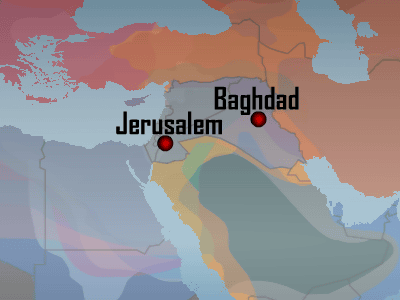The studio behind the design explains the fonts used everywhere in Berlin

The city of Berlin, Germany, has adopted a new alphabet font ' BERLIN TYPE ' from 2020.
BERLIN TYPE | HvD Fonts
https://www.hvdfonts.com/custom-cases/berlin-type

BERLIN TYPE was commissioned by the city of Berlin to HvD Fonts through Jung von Matt , Germany's second largest advertising agency. HvD Fonts said of the design, ``For a designer born and raised in Berlin, merging the diversity and flair of the city, the city's past and present, is quite a challenge.''
BERLIN TYPE, which is actually used as Berlin's official font, looks like the following.

BERLIN TYPE is used for station signs and street signs in Berlin. In Berlin, the design styles of buildings on the east and west sides of the city are quite different, and BERLIN TYPE has been designed to match both.
Additionally, Berlin's underground stations are old, having opened in 1902, and stations built within the next 10 years retain traces of

Road signs in East Berlin are made by cutting away a layer of plastic, which creates rounded corners in the letters. On the other hand, in West Berlin, silk screen printing was used in which ink was poured into a mold with holes, so it was common for the prints to have corners. After the unification of East and West Berlin, in the mid-1990s, letter designer

In addition, HvD Fonts spent hours researching historical photographs of Berlin's buildings and monuments from the past 100 years, with the help of the Stadtmuseum Berlin, to research fonts that would be appropriate for Berlin. According to HvD Fonts, the 1920s in particular was a turbulent time when Berlin's economic growth and arts and culture blossomed, and unique neon signs and lettering were prominent. Also, during the rebuilding period from around 1950 to 1960, brand-specific signboards and lettering adorned the town.

Based on this research, BERLIN TYPE was designed character by character using delicate and precise pixel-by-pixel drawing on a grid. The text is optically tuned to accommodate small text sizes and maintain a comfortable rhythm while reading.

HvD Fonts lists five main features of BERLIN TYPE to improve originality and ease of identification. The first is that it has a flat top and bottom design that makes it easy to draw. The second point is the 'R' with a low center of gravity, which was used in Berlin in the 1920s. The third one is a design that looks like the top of the letter ``t'' is cut diagonally to make it easier to distinguish between the lowercase letters ``t'' and ``l''. The fourth is the 'z' which is made a little wider, and the fifth is the '4' which has rounded corners like the z and a larger upper part like an R.

In addition, the lowercase 'x' is slightly larger than the uppercase letter, improving readability, and the corners are rounded, like the signs in East Berlin, creating a sense of warmth and friendliness, making it easy to read while matching any location. It has been devised to increase the In addition, the character set covers all European languages and provides a wide range of additional characters for printing, such as accent marks, Greek letters, currency symbols, etc.

Related Posts:
in Design, Posted by log1e_dh







